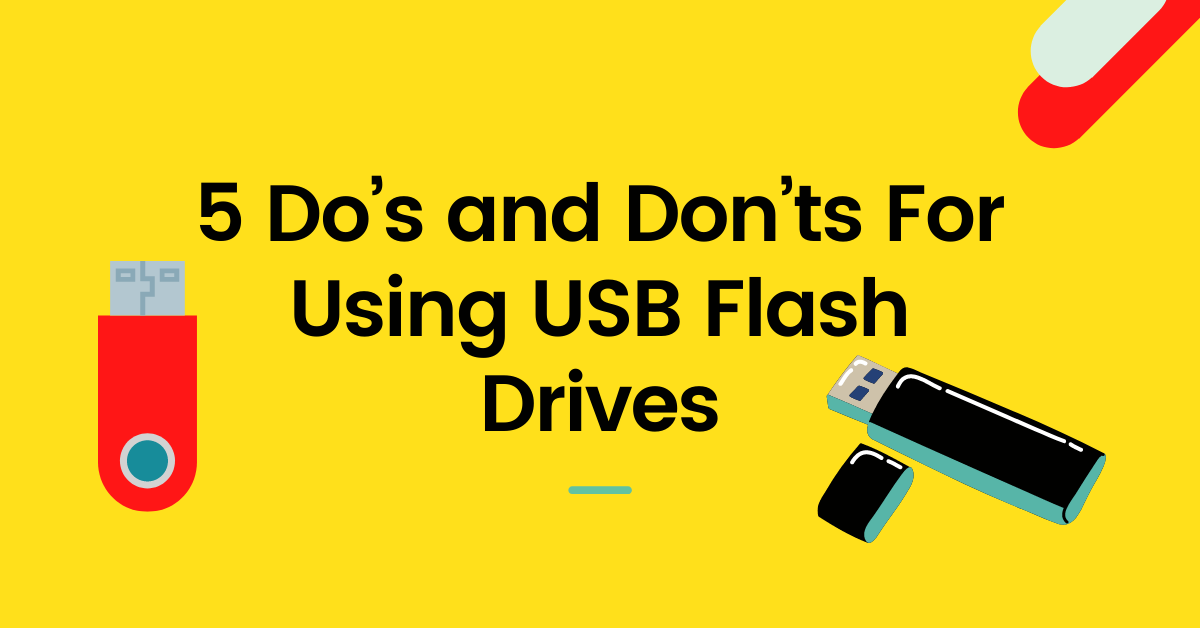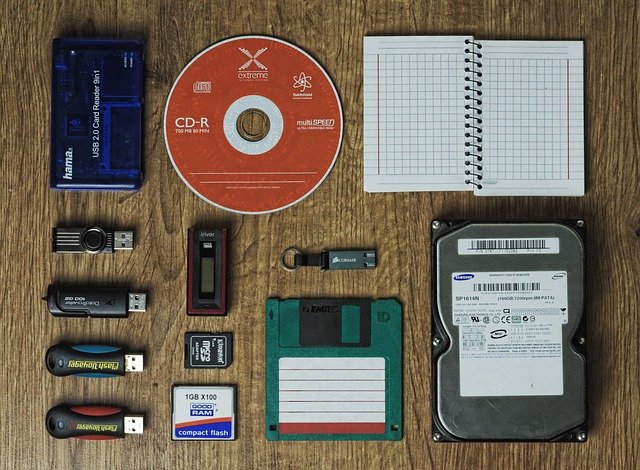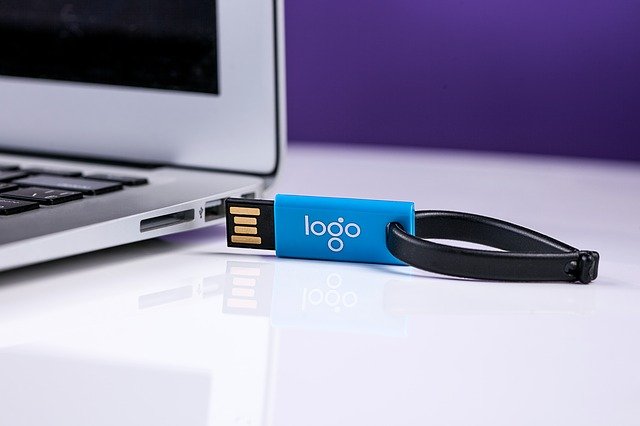The post will show you the do’s and don’ts for using USB flash drives.
A portable storage device has good and affordable storage capacity; the one device that comes to your mind while reading this is a USB.
USB flash drives are one of the most popular and most used flash storage devices for transferring data from one device to another. It does not matter if you want to use the USB flash drive on a laptop, a desktop, or a digital camera; it’s compatible with every device.
Because of the increased usage of USB thumb drives, it’s essential to know how to increase their durability and protect your data.
Here are a few Dos and don’ts for using a USB flash drive to help you keep your thumb drives safe from accidental damage.
Table of Contents
5 Dos For The Safety Of USB Flash Drives And The Data On It
1. Always perform safe removal of the USB thumb drive connected to your PC
When removing the pen drive from the computer, click the Safely Remove Hardware option. Then, once the pop-up says it is safe to remove the hardware, you can unplug the USB drive.
Abrupt removal of the thumb drive from your PC can cause USB drive corruption, leading to data loss. If you have lost any data from the USB drive because of corruption or any other data loss scenario, the only way to retrieve that data is by using trusted data recovery software, such as Remo Software.
2. Protect your USB flash drives by running anti-virus and malware software
A virus-infected pen drive can act as a carrier and transfer the viruses to the computers to which they are connected, which can cause numerous computer problems. It can result in the deletion of files, data corruption, and even freeze your drive.
If you are stuck under such circumstances, you must recover the crucial data before repairing the damage to the USB drive. Otherwise, it can lead to permanent data loss.
Keep a USB flash drive data recovery tool handy if you save confidential and crucial data on USB. It is recommended that reliable flash drive data recovery software like Remo USB data recovery software be used to avoid any further damage to the drive/data.
3. Use secure USB drives
You can make your thumb drive password-protected. You can also upgrade yourself to the newer models of USB drives. They have added safety features such as fingerprint authentication to encrypt the data from threats.
READ ALSO: Stellar Data Recovery Professional Review: The Ultimate Windows Data Rescue Tool
4. Always encrypt the files and folders that you save on the USB flash drive
This will also give you added safety from virus infection as it cannot penetrate encrypted data. Keeping the important data in compressed ZIP or RAR format is safe. Most organizations have encryption software like Bitlocker for upgraded security for sensitive intellectual property.
5. Create Regular Backups
Data loss is inevitable. Even after taking all the necessary measures, corruption and data loss are possible. Thus, make it a habit to create a regular backup of the USB flash drive. However, choosing another physical drive for a backup might also be risky as the chances of data corruption are the same. Any storage drive is prone to damage for various reasons, such as sudden power loss, program crashes, operating system crashes, etc.
You must immediately disconnect your flash device if you have lost access to some critical files due to data corruption or any other issue. Do not use the USB drive further or attempt any troubleshooting methods if you have essential data.
Such practices can contribute to corruption and significantly decrease your chances of successful data recovery. The best solution is to use a professional data recovery tool like Remo.
5 Don’ts For Using USB Drive
1. Protect your USB drive from getting any physical damage
Do not expose your USB flash drive to extreme heat or water. Keep your pen drive in a container that will save it from any physical damage and loss.
2. Do not edit the files directly on the USB flash drive
It is always recommended that we work on the files on the pen drive after copying them to our PC. Leaving the flash drive plugged into your system for too long or during boot time can lead to data corruption.
3. Do not leave the pen drive connected to your PC when not in use
As long as the USB drive is connected to your system, the operating system continuously writes on the cells of the flash drive. This, again, leads to an unnecessary increase in usage rate and considerably increases the wear and tear of the storage device.
4. Do not Defragment your USB flash drive
Your pen drive does not need a defrag operation as it causes slowdowns, crashes, and sometimes leads to system failure.
Defragmentation is a good practice for your hard disk drive as it rearranges fragmented files to occupy storage locations that help optimize storage and performance.
However, the same is not valid for USB flash drives, as they cause degradation of the device due to increased read and write cycles. Thus, disable the auto-defragment for your USB drive.
5. Do not Format the USB drive with a File System that is unique only to one Operating System
FAT32 and exFAT are the most commonly used file systems supported by almost all operating systems. Thus, if you have formatted the flash drive with another file system that your PC’s operating system does not recognize, it might lead to inaccessibility.
Conclusion
The above-mentioned tips will help you increase the lifespan of your flash drive. Keep a backup of your data in case something unexpected happens to it.
Every storage device has a life span; even flash drives can’t last forever. Eventually, with time and with use, these things give out. However, using USB drives with the care they need can help prolong their life and ensure your data’s safety.
INTERESTING READS
- How To Lock And Unlock Your Windows PC With A Pendrive (Like A Pro!)
- How To Prevent A DDoS Attack On Your WordPress Site
- 10 Top Cybersecurity Products On AliExpress
- 5 Top Wikileaks Alternatives (Number 5 Is Our Favourite)
- Recover Lost Data With UltData Android Data Recovery
- How To Secure Your USB Flash Drive
- Product Review: SFWare USB Data Recovery Tool
- Understanding The Windows 10 Ransomware Protection
About the Author:
Chandra Palan is an Indian-born content writer, currently based in Australia with her husband and two kids. She is a passionate writer and has been writing for the past decade, covering topics ranging from technology, cybersecurity, data privacy and more. She currently works as a content writer for SecureBlitz.com, covering the latest cyber threats and trends. With her in-depth knowledge of the industry, she strives to deliver accurate and helpful advice to her readers.
Christian Schmitz is a professional journalist and editor at SecureBlitz.com. He has a keen eye for the ever-changing cybersecurity industry and is passionate about spreading awareness of the industry's latest trends. Before joining SecureBlitz, Christian worked as a journalist for a local community newspaper in Nuremberg. Through his years of experience, Christian has developed a sharp eye for detail, an acute understanding of the cybersecurity industry, and an unwavering commitment to delivering accurate and up-to-date information.









